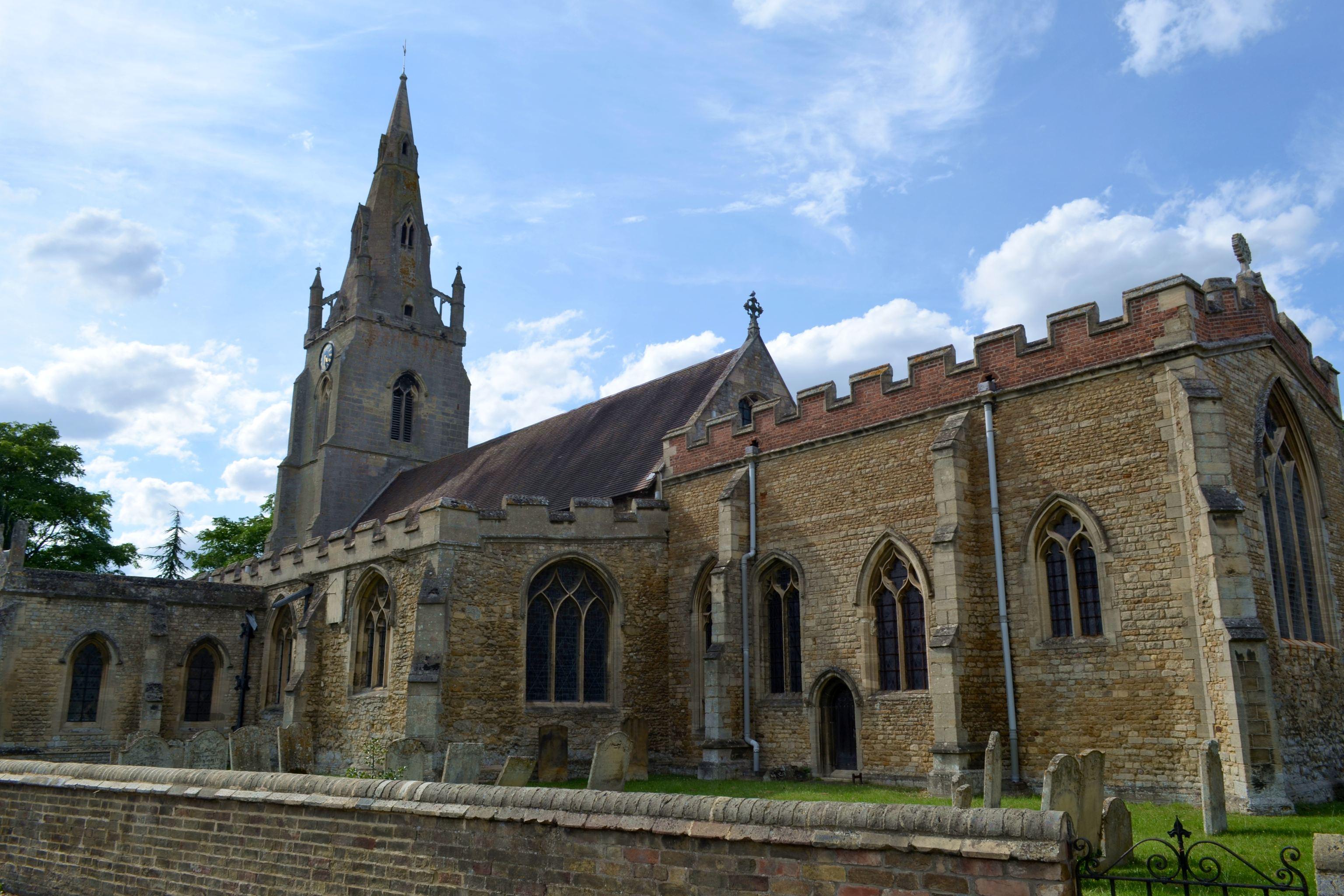St Mary the Virgin
Over, Cambridgeshire
The immensely tall and elegant 14th century spire of St Mary’s beckons across the Fens: no one with an interest in church architecture should ignore it.

The Fenland village of Willingham owes its exceptionally interesting church partly to its location on a medieval processional route.
Willingham, Cambridgeshire
This ran from Cambridge to the cathedral at Ely, whose bishop was a landowner and had a manor here. The intricately constructed 14th century spire, with its pinnacles, windows and little flying buttresses, makes a distinctive landmark.
Fragments of ornate Norman stonework set into the porch wall suggest an earlier church of some importance. The pieces came from the south wall of the chancel, rebuilt as part of a restoration in the 1890s.
The work of that time, carried out with great sensitivity, uncovered historic treasure: astonishing medieval wall paintings of varying dates. An early figure is thought to be Etheldreda, founder of the original monastery at Ely. Above the north arcade is a 14th century painting of St Christopher crossing a river teeming with fish.
The south side has a very clear 15th century depiction of the Visitation of Mary to her cousin Elizabeth. The arcades support a splendid but rather curious looking double hammerbeam roof.
After the previous roof collapsed, it was rather ingeniously replaced by a complete roof that was brought in pieces, on carts, from the priory church at Barnwell, in Cambridge, which had been dismantled after the Dissolution. The 'new' roof differed slightly in size: there are telltale signs that it didn't quite fit!
Perhaps the most unusual feature at here is a small 14th century room off the north side of the chancel. Variously described as a sacristy or a treasury, it is now thought possible that it was an anchorhold: a cell built to house a long term recluse known as an anchorite (or anchoress).
The steeply pitched stone roof is supported by beautifully crafted arches of fine stonework.
Over, Cambridgeshire
The immensely tall and elegant 14th century spire of St Mary’s beckons across the Fens: no one with an interest in church architecture should ignore it.
Longstanton, Cambridgeshire
The first known reference to the village is in 1070 as Stantona, an enclosed settlement of stoney ground.
Long Stanton, Cambridgeshire
A trend setting thatched church.